As-salamu alaikum: Essential Arabic Greetings Guide

Written by
Ernest Bio Bogore

Reviewed by
Ibrahim Litinine
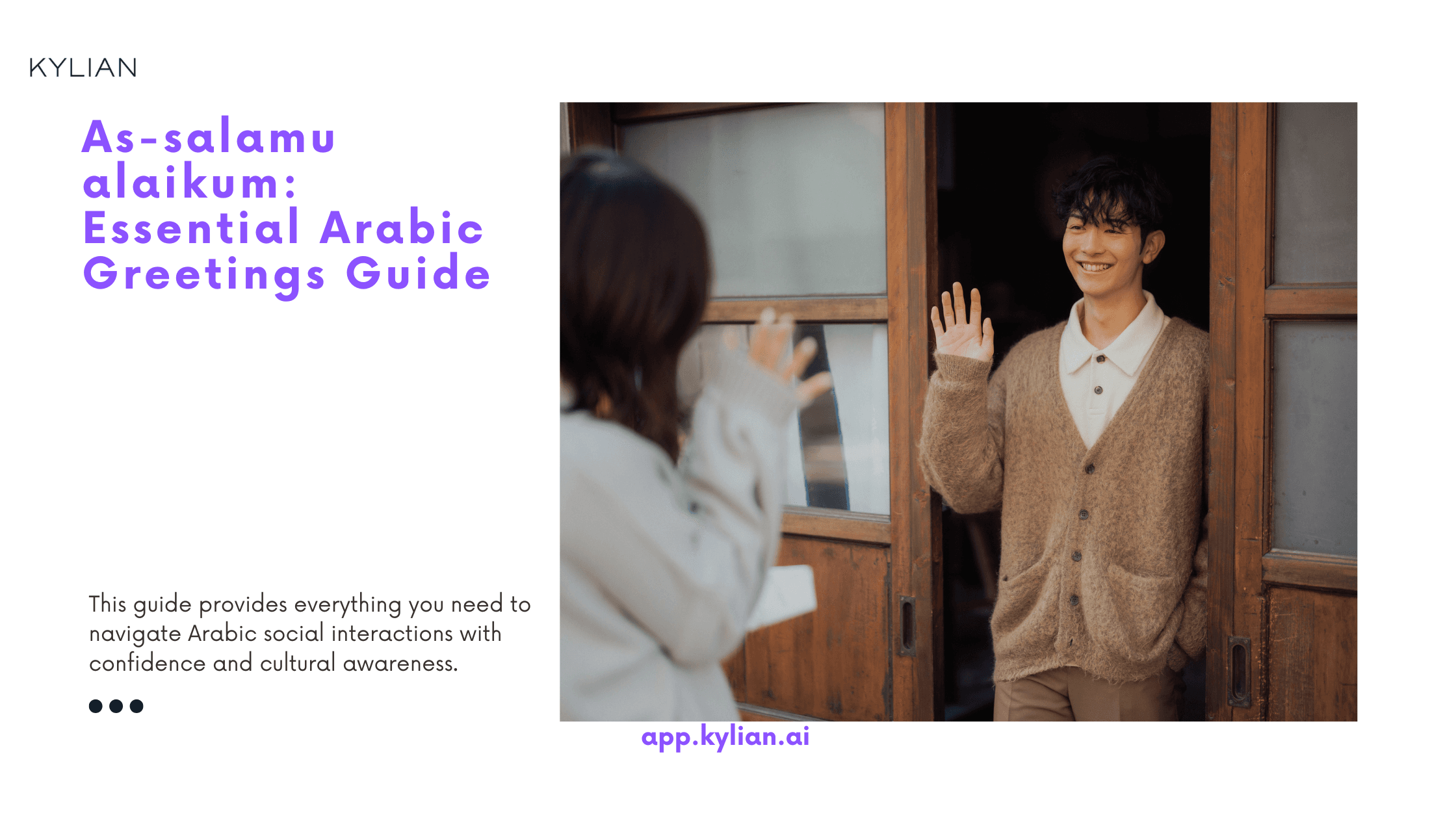
Arabic ranks among the world's fastest-growing languages, with an estimated 420 million speakers globally. Learning Arabic opens doors to rich cultural experiences, professional opportunities, and meaningful connections across 25 countries where it holds official or spoken status.
For language learners, mastering basic greetings and farewells serves as the perfect entry point. This guide provides everything you need to navigate Arabic social interactions with confidence and cultural awareness.
Understanding Arabic Greetings: Religious and Non-Religious Expressions
Arabic greetings reflect the language's deep cultural and religious roots. Understanding the distinction between religious and non-religious expressions is essential for appropriate communication.
Religious Greetings
The most common Arabic greeting is the Islamic expression "As-salamu alaikum" (السلام عليكم), which translates to "Peace be upon you." This universal greeting transcends regional boundaries and is recognized throughout the Arabic-speaking world.
When someone greets you with "As-salamu alaikum," the proper response is "Wa-alaikum as-salam" (وعليكم السلام), meaning "And peace be upon you too."
Non-Religious Greetings
For contexts where a secular greeting is more appropriate, "Ahlan" (أهلاً) serves as the standard expression. When someone greets you with "Ahlan," you can respond with "Ahlan beek" (أهلاً بيك) if addressing a man or "Ahlan beeki" (أهلاً بيكي) if addressing a woman.
Time-Specific Greetings in Arabic
Arabic, like English, features specific greetings that vary according to the time of day. These expressions add nuance and cultural awareness to your interactions.
Morning Greetings
- Good morning: "Sabah al-kheir" (صباح الخير) - literally translates to "morning of goodness"
- Response: "Sabah an-noor" (صباح النور) - means "morning of light"
Evening Greetings
- Good evening: "Masaa al-kheir" (مساء الخير) - literally translates to "evening of goodness"
- Response: "Masaa an-noor" (مساء النور) - means "evening of light"
Alternatively, a more poetic response to an evening greeting could be "Masaa al-ward" (مساء الورد), which means "evening of flowers."
Night Greetings
Similar to English, "good night" in Arabic is primarily used when parting ways rather than as an initial greeting. "Layla sa'eeda" (ليلة سعيدة) can be used when saying goodbye in the evening, though it's less common than other farewells.
Formal Arabic Greetings and Responses
Formal settings require appropriate greetings that convey respect. Below are essential formal expressions for professional environments, meetings with elders, or interactions with strangers.
How Are You?
The formal way to ask "How are you?" in Arabic is "Kaifa haaluk?" (كيف حالك؟). This question typically follows initial greetings.
Possible responses include:
- Religious response: "Bekheir alhamdulilah" (بخير الحمد لله) - "Good, praise be to God"
- Non-religious response: "Bekheir shukran" (بخير شكراً) - "Good, thank you"
To reciprocate and ask how the other person is doing, you can say:
- "Wa anta?" (وأنت؟) when addressing a man
- "Wa anti?" (وأنتِ؟) when addressing a woman
Informal Arabic Greetings
Casual settings call for more relaxed expressions. Informal greetings vary significantly across Arabic dialects, reflecting the rich linguistic diversity of the Arabic-speaking world.
Levantine Arabic (Syria, Lebanon, Jordan, Palestine)
- How's it going?: "Keefak?" (كيفك؟) when addressing a man or "Keefik?" (كيفيك؟) when addressing a woman
- Response: "Mneeh" (منيح) for men or "Mneeha" (منيحة) for women, meaning "I'm fine"
Egyptian Arabic
- What's up?: "Akhbarik eeh?" (أخبارك إيه؟)
- Response: "Kwayis" (كويس) for men or "Kwayisa" (كويسة) for women, meaning "Good"
Gulf Arabic (Saudi Arabia, UAE, Qatar, Kuwait, Bahrain)
- How are you?: "Shlonak?" (شلونك؟) for men or "Shlonik?" (شلونيك؟) for women
- Response: "Zein" (زين), meaning "Good"
Maghrebi Arabic (Morocco, Algeria, Tunisia)
- How's it going?: "La bas?" (لا باس؟) - literally "No harm?"
- Response: "La bas, hamdullah" (لا باس، الحمد لله) - "No harm, praise be to God"
Essential Arabic Phrases for Everyday Interactions
Beyond initial greetings, these fundamental expressions will help you navigate daily interactions with grace and cultural awareness.
Expressing Gratitude
Gratitude holds significant cultural value in Arabic-speaking societies. Here's how to express thanks appropriately:
- Thank you: "Shukran" (شكراً)
- Thank you very much: "Shukran jazeelan" (شكراً جزيلاً)
- Religious expression of thanks: "Jazakallah kheir" (جزاك الله خير) - "May God reward you with goodness"
- Response to religious thanks: "Wa iyak kheir" (وإياك خير) - "And you as well"
The standard response to "Shukran" is "Afwan" (عفواً), meaning "You're welcome." Among friends and family, a warmer response is "Min eyooni" (من عيوني), which literally translates to "From my eyes" - indicating that the favor was done gladly.
Apologizing in Arabic
Knowing how to apologize appropriately is essential in any language. Arabic offers several expressions with varying degrees of formality:
- Excuse me/Pardon me: "Afwan" (عفواً) or "Lo samaht" (لو سمحت) - used for minor interruptions or to get someone's attention
- Sorry: "Asif" (آسف) for men or "Asifa" (آسفة) for women - for general apologies
- Forgive me: "Samahni" (سامحني) - used for more serious offenses or formal situations
When someone apologizes to you, a common response is "Hasal kheir" (حصل خير), meaning "No worries" or literally "Good has happened."
Essential Questions for Basic Conversations
These fundamental questions will help you initiate and sustain basic conversations in Arabic:
Personal Information
- What's your name?: "Ma huwa ismuk?" (ما هو اسمك؟) formally, or "Shu ismuk?" (شو اسمك؟) informally
- Response: "Ismee..." (إسمي...) or "Ana..." (أنا...) followed by your name
- Where are you from?: "Min aina anta?" (من أين أنت؟) formally, or "Inta min ween?" (إنت من وين؟) informally
- Response: "Ana min..." (أنا من...) followed by your country or city
Language Skills
- Do you speak another language?: "Hal tatakallam lugha ukhra?" (هل تتكلم لغة أخرى؟)
- Response: "Na'am, atakallam..." (نعم، أتكلم...) followed by the language, or "La, asif" (لا، آسف) - "No, sorry"
Practical Questions for Travelers
- Where is the restroom?: "Ayna al-hammam?" (أين الحمام؟) or more politely, "Lo samaht, ayna al-hammam?" (لو سمحت، أين الحمام؟)
- Response: "Hunak" (هناك) - "There" (usually with a pointing gesture)
- How much is this?: "Bikam hatha?" (بكم هذا؟)
- Response: Usually a numerical amount followed by the currency
Arabic Farewells
Like greetings, Arabic farewells come in both religious and non-religious forms. Choosing the appropriate expression depends on the social context and your relationship with the other person.
Religious Farewells
- May God keep you safe: "Fi aman Allah" (في أمان الله)
- May God be with you: "Allah ma'ik" (الله معك) for men or "Allah ma'iki" (الله معكِ) for women
Non-Religious Farewells
- Goodbye: "Ma'a as-salama" (مع السلامة) - literally "with safety"
- Until we meet again: "Ila al-liqaa" (إلى اللقاء) - a formal expression typically used in media or formal written communication
Unlike greetings, responses to farewells often mirror the original expression. For example, if someone says "Ma'a as-salama," you can reply with the same phrase.
Good Night
- Good night: "Tisbah 'ala kheir" (تصبح على خير) when addressing a man - literally "May you wake up to goodness"
- Response: "Wa anta min ahlu" (وأنت من أهله) - "And you as well"
Etiquette and Cultural Considerations in Arabic Communication
Understanding cultural norms is as important as knowing the right words. Here are essential etiquette guidelines for effective communication in Arabic-speaking contexts:
Respect for Elders
- Avoid using first names when addressing elders unless explicitly invited to do so
- Use respectful titles like "Ammo" (عمو) for men - meaning "uncle" or "Khalti" (خالتي) for women - meaning "aunt"
- In formal settings, you can refer to parents by their eldest child's name: "Abu Ahmad" (أبو أحمد) - "Father of Ahmad" or "Umm Layla" (أم ليلى) - "Mother of Layla"
Formal Address
- Use "Hadratik" (حضرتك) as a formal pronoun similar to "Sir" or "Madam" in English
- Example: "Meen hadratik?" (مين حضرتك؟) - "Who are you?" (politely)
- This is particularly common in phone conversations to identify callers
Politeness Expressions
- Please: "Min fadlek" (من فضلك) for men or "Min fadlik" (من فضلكِ) for women; alternatively, "Lo samaht" (لو سمحت)
- Welcome: "Ahlan wa sahlan" (أهلاً وسهلاً)
- Please come in/Please help yourself: "Tfadal" (تفضل) for men or "Tfadali" (تفضلي) for women
Non-Verbal Communication
Beyond verbal expressions, non-verbal cues play a vital role in Arabic communication:
- Stand when someone enters the room as a sign of respect
- Wait for the host to begin eating before you start
- Use your right hand for eating, greeting, and passing objects
- Maintain appropriate eye contact to show attentiveness and respect
Cultural Importance of Hospitality
Hospitality (كرم الضيافة - karam ad-diyafa) is a cornerstone of Arabic culture. Understanding related expressions enhances your cultural competence:
- My home is your home: "Bayti baytak" (بيتي بيتك)
- Make yourself at home: "Khod rahtak" (خذ راحتك)
- You honor us with your presence: "Tasharrafna" (تشرفنا)
Regional Variations in Arabic Greetings
Arabic dialects vary significantly across regions, resulting in distinct greeting patterns. Here are some notable examples:
Maghreb Region (North Africa)
- Morocco, Algeria, Tunisia use "La bas 'alayk?" (لا بأس عليك؟) - "No harm upon you?" as a common greeting
- Response: "La bas, hamdullah" (لا بأس، الحمد لله) - "No harm, praise be to God"
Gulf Region
- Saudi Arabia, UAE, Qatar favor "Kayf al-hal?" (كيف الحال؟) - "How's the situation?"
- Response: "Bekheir, allah yesalmak" (بخير، الله يسلمك) - "Good, may God keep you safe"
Levantine Region
- Syria, Lebanon, Jordan, Palestine often use "Keef halak?" (كيف حالك؟) - "How are you?"
- Response: "Tamam, hamdullah" (تمام، الحمد لله) - "Perfect, praise be to God"
Egypt
- Egyptians commonly say "Ezzayak?" (إزيك؟) - "How are you?"
- Response: "Kwayes, alhamdulillah" (كويس، الحمد لله) - "Good, praise be to God"
Learning Strategies for Arabic Greetings
Mastering Arabic greetings requires practice and cultural immersion. Here are effective strategies to enhance your learning:
Daily Practice
- Set aside 10-15 minutes daily for greeting practice
- Create flashcards with Arabic expressions on one side and translations on the other
- Find a language exchange partner for authentic conversation practice
Cultural Immersion
- Watch Arabic films and television shows with subtitles
- Listen to Arabic music and podcasts
- Follow Arabic-speaking social media accounts
Technological Resources
- Use language learning applications with audio components
- Join online forums and communities for Arabic learners
- Utilize voice recording tools to compare your pronunciation with native speakers
Learn Any Language with Kylian AI
Private language lessons are expensive. Paying between 15 and 50 euros per lesson isn’t realistic for most people—especially when dozens of sessions are needed to see real progress.
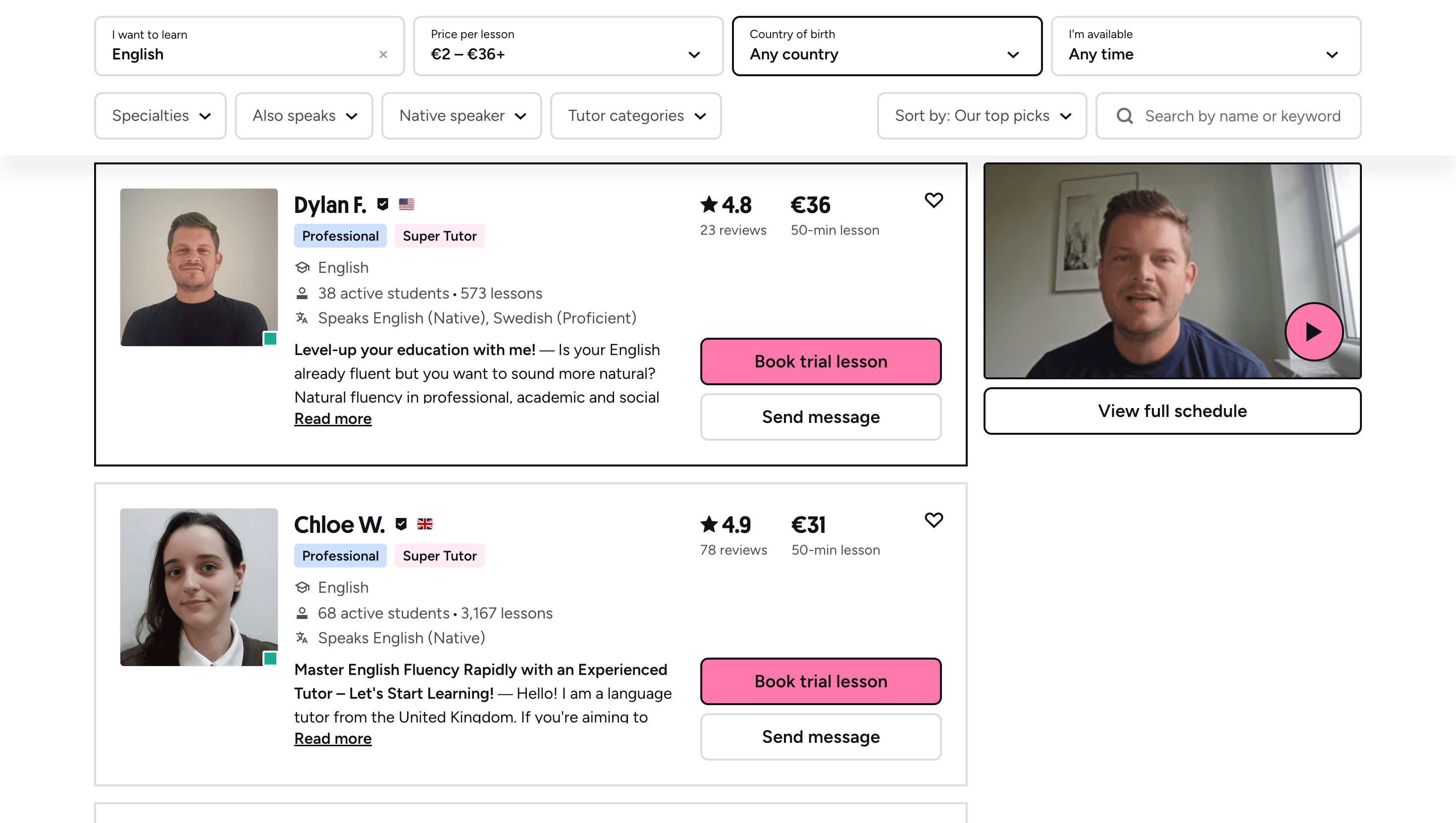
Many learners give up on language learning due to these high costs, missing out on valuable professional and personal opportunities.
That’s why we created Kylian: to make language learning accessible to everyone and help people master a foreign language without breaking the bank.
To get started, just tell Kylian which language you want to learn and what your native language is
Tired of teachers who don’t understand your specific struggles as a French speaker? Kylian’s advantage lies in its ability to teach any language using your native tongue as the foundation.
Unlike generic apps that offer the same content to everyone, Kylian explains concepts in your native language (French) and switches to the target language when necessary—perfectly adapting to your level and needs.
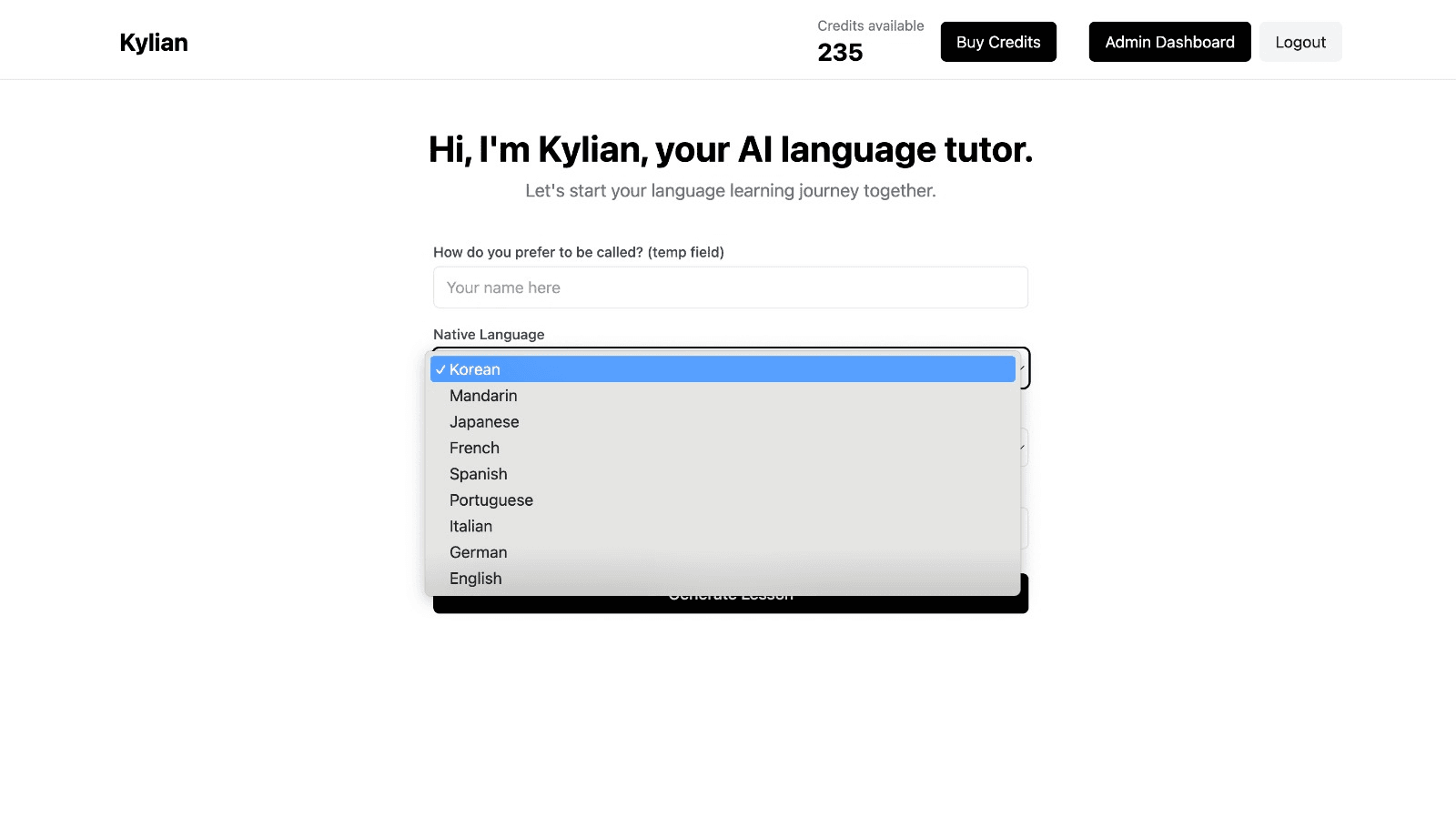
This personalization removes the frustration and confusion that are so common in traditional language learning.
Choose a specific topic you want to learn
Frustrated by language lessons that never cover exactly what you need? Kylian can teach you any aspect of a language—from pronunciation to advanced grammar—by focusing on your specific goals.
Avoid vague requests like “How can I improve my accent?” and be precise: “How do I pronounce the R like a native English speaker?” or “How do I conjugate the verb ‘to be’ in the present tense?”
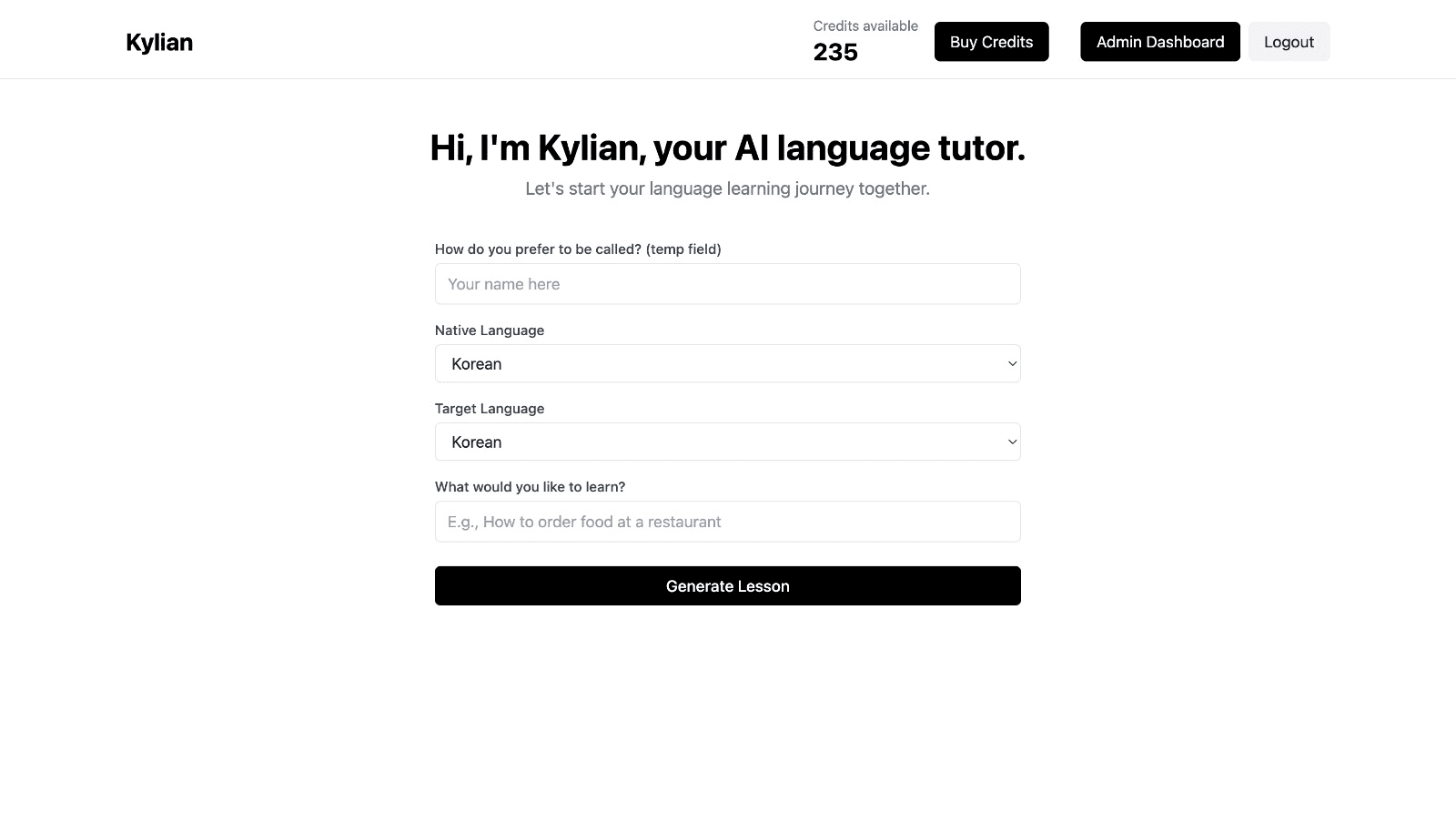
With Kylian, you’ll never again pay for irrelevant content or feel embarrassed asking “too basic” questions to a teacher. Your learning plan is entirely personalized.
Once you’ve chosen your topic, just hit the “Generate a Lesson” button, and within seconds, you’ll get a lesson designed exclusively for you.
Join the room to begin your lesson
The session feels like a one-on-one language class with a human tutor—but without the high price or time constraints.
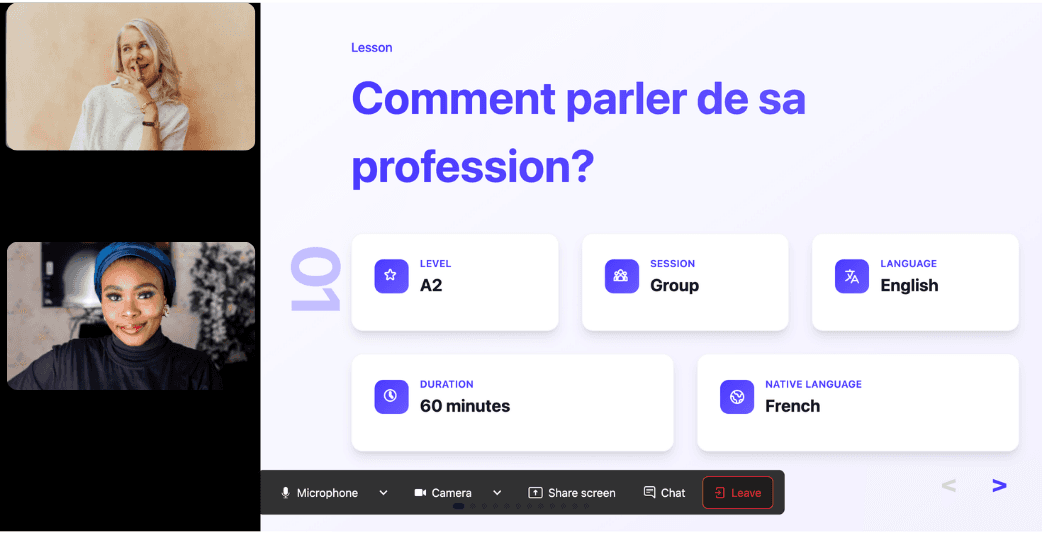
In a 25-minute lesson, Kylian teaches exactly what you need to know about your chosen topic: the nuances that textbooks never explain, key cultural differences between French and your target language, grammar rules, and much more.
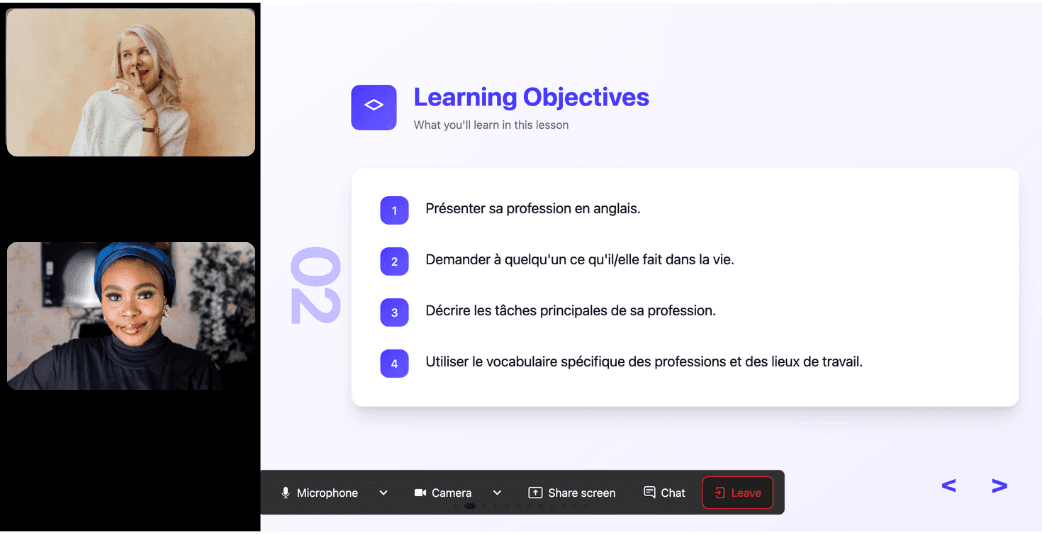
Ever felt frustrated trying to keep up with a native-speaking teacher, or embarrassed to ask for something to be repeated? With Kylian, that problem disappears. It switches intelligently between French and the target language depending on your level, helping you understand every concept at your own pace.
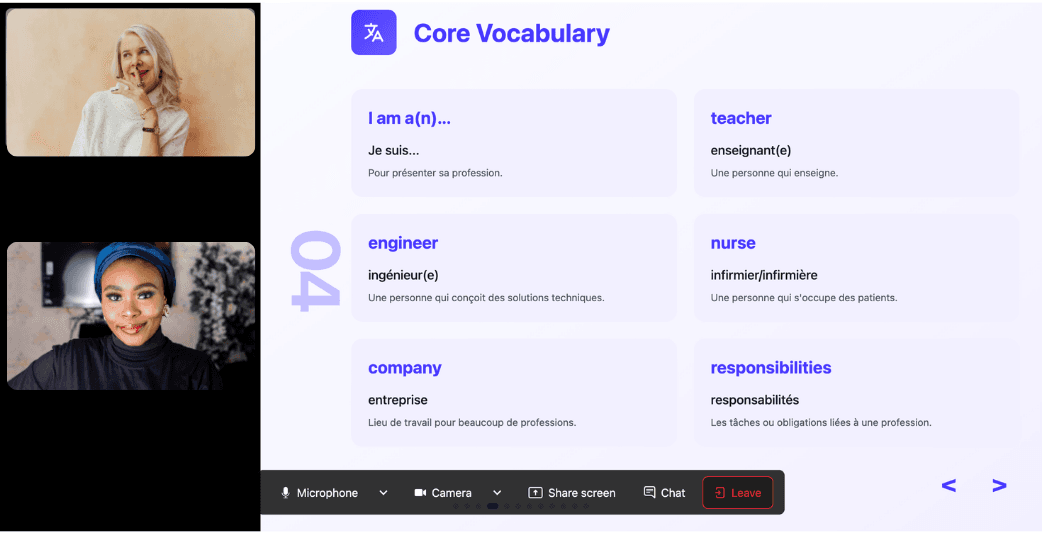
During the lesson, Kylian uses role-plays, real-life examples, and adapts to your learning style. Didn’t understand something? No problem—you can pause Kylian anytime to ask for clarification, without fear of being judged.
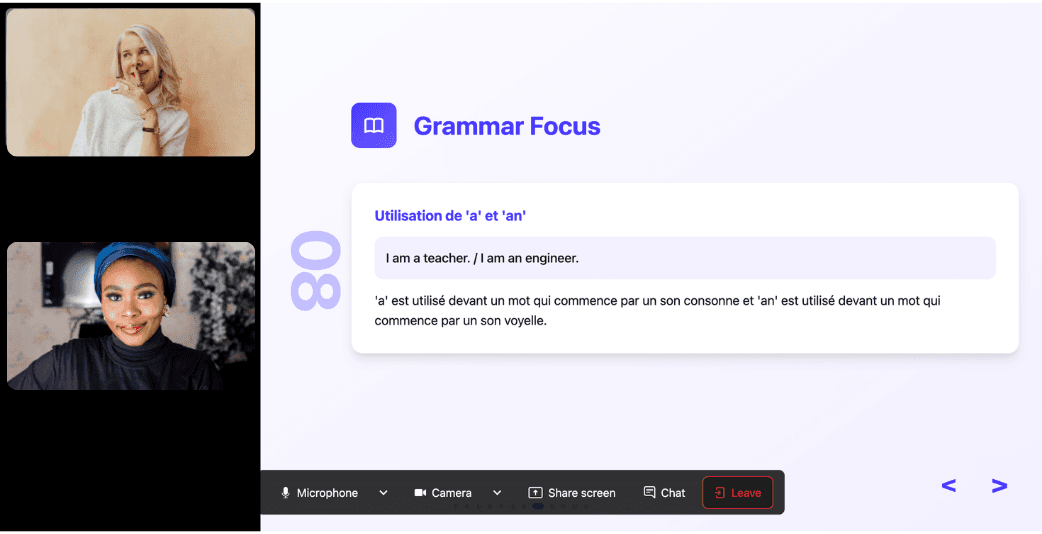
Ask all the questions you want, repeat sections if needed, and customize your learning experience in ways traditional teachers and generic apps simply can’t match.
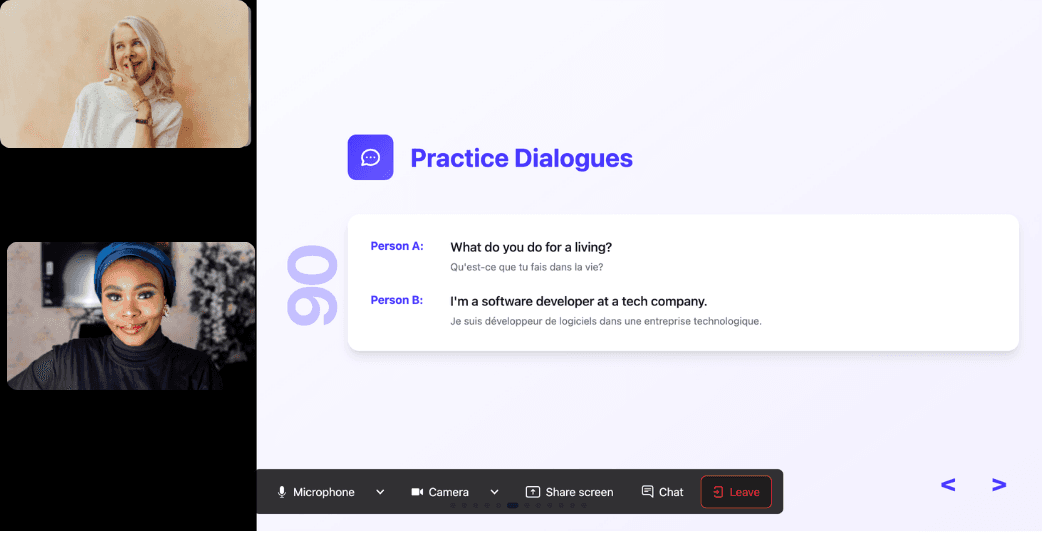
With 24/7 access at a fraction of the cost of private lessons, Kylian removes all the barriers that have kept you from mastering the language you’ve always wanted to learn.
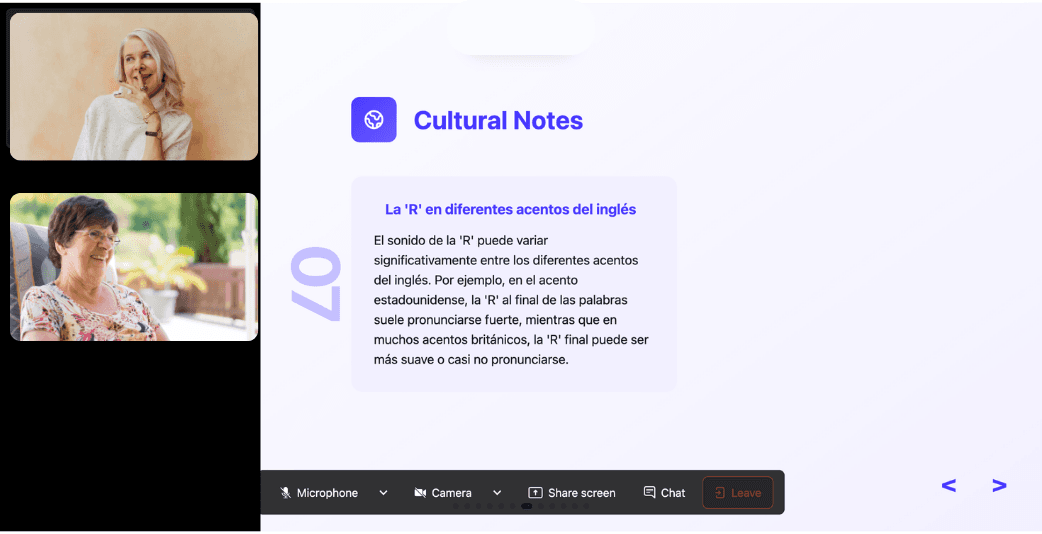
Similar Content You Might Want To Read

Tagalog Pronunciation Guide: Master Filipino Speaking Skills
Picture this scenario: You confidently approach a local vendor in Manila, ready to bargain for fresh mangoes in Tagalog. Instead of the friendly negotiation you expected, you're met with puzzled stares and barely concealed amusement. The culprit? You've just asked for "manggang mata" (eye mango) instead of "manggang hinog" (ripe mango) due to a subtle mispronunciation that completely altered your intended meaning. This experience, while embarrassing, highlights a fundamental truth about Tagalog: pronunciation precision directly correlates with communication success. Unlike languages where mispronunciation might result in mild confusion, Tagalog's tonal and stress-dependent nature means small errors create significant meaning gaps. The stakes matter more now than ever. With over 100 million Tagalog speakers globally and the Philippines emerging as a key player in Southeast Asian commerce, accurate pronunciation has evolved from cultural courtesy to professional necessity. Whether you're building business relationships, connecting with Filipino communities, or simply showing respect for the culture, mastering these pronunciation fundamentals determines your communication effectiveness. This guide dissects the critical elements that separate competent Tagalog speakers from those who struggle with basic comprehension issues. We'll examine the phonetic architecture, stress mechanics, and systematic approaches that create authentic Filipino speech patterns.

Your Complete Guide to Days of the Week in French
Learning how to say and use the days of the week in French is a fundamental step toward language fluency. Whether you're scheduling business meetings, making weekend plans with friends, or simply trying to understand when a shop is open, mastering these seven essential words will dramatically improve your everyday communication skills. This comprehensive guide explores everything you need to know about the French days of the week—from pronunciation and etymology to grammatical rules and cultural contexts. We'll also examine common phrases and expressions that will help you sound more natural when discussing time and schedules in French.

Learn Spanish on Your Own: Top Tips and Techniques
Learning Spanish independently has never been more accessible. With abundant resources at your fingertips and proven methodologies available, you can develop Spanish proficiency without formal classroom instruction. This comprehensive guide breaks down effective strategies to master Spanish on your own, from establishing your learning foundations to achieving conversational fluency.

Speak Spanish Fluently: Best Methods & Top Tips
Looking to master Spanish? This comprehensive guide delivers proven strategies, methods, and crucial mistakes to avoid on your path to Spanish fluency. Whether you're a complete beginner or already conversational, achieving Spanish fluency requires strategic approaches that optimize your learning journey. This guide breaks down the most effective techniques for mastering Spanish listening, reading, writing, and speaking—all essential components for true language proficiency.

Master Any Language Fast with Olly Richards: Polyglot Tips
Learning a new language often feels like climbing an insurmountable mountain. The grammar rules, vocabulary lists, and pronunciation challenges can be overwhelming. But what if there were proven methods to accelerate this process? Polyglot Olly Richards, who speaks eight languages (French, Spanish, Portuguese, Japanese, Thai, Arabic, Cantonese, and Italian), offers valuable insights on rapid language acquisition. Richards has developed the StoryLearning® method and has demonstrated the ability to become conversational in a language in just 90 days—an impressive feat he accomplished with Italian. Let's explore the scientifically-backed strategies and practical advice from someone who has repeatedly navigated the language learning journey successfully.

60 English Verbs for Beginners: Building Your Foundation
Learning English requires a strategic approach. When faced with thousands of words to memorize, knowing which ones to prioritize makes all the difference in your progress. Verbs—the action words that drive your sentences—form the backbone of effective communication. Master the right ones first, and you'll achieve conversational ability much faster.